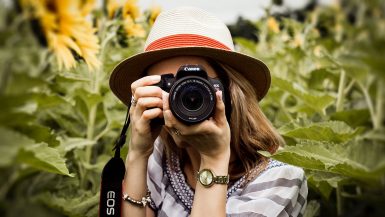An excellent DSLR will serve you well even if you favor classic controls over cutting-edge extras. Despite the current popularity of mirrorless cameras, dedicated single-lens reflex cameras (DSLRs) have some advantages. Features such as increased durability and weight, increased value for the price, and additional lens options are available. These are the best DSLR cameras in 2025, and we’ve used them all.
The best DSLRs today are only slightly less capable than their mirrorless analogs. Many modern DSLRs now include mirrorless features such as 4K video, on-sensor phase detect autofocus and reliable live view modes.
An affordable DSLR is a fantastic upgrade from the camera on your phone or a basic compact camera. There is a much wider variety of lenses for DSLRs than for mirrorless cameras, which is another major advantage.
To Choose a DSLR or a Mirrorless Camera?
Digital single-lens reflex cameras are also known as DSLRs. It’s the equivalent of a traditional SLR camera, but it captures images electronically rather than on film. The viewfinder is illuminated by light that enters the camera through the lens and is reflected by a mirror inside the camera’s body. The digital sensor is exposed to light, capturing an image when the shutter is pressed.
Because there is no mirror in a mirrorless camera, there is no obvious way to preview an image before taking it (more on that later). It’s much more compact and convenient thanks to its simplified, streamlined design.
There are, however, a few important distinctions to keep in mind.
1. Size of a Battery
It’s still an area where mirrorless cameras are lacking, which can be a severe drawback for photographers who spend extended periods shooting in the field. Battery life can be quickly depleted due to the constant activity of the sensor in a mirrorless camera’s smaller body. While the cost of spare batteries is minimal, the need to constantly replace them is an unnecessary annoyance.
2. Viewfinder
How you feel about the two different viewfinder systems can determine which one is better. If you’re using a DSLR, the view in the viewfinder is what you’ll get when you snap a photo. The mirror inside the DSLR reflects the image into the viewfinder. Since the mirrorless system, predictably, lacks a mirror, the viewfinder image is generated digitally.
It’s not quite as easy, but this mirrorless viewfinder system does reflect the image with the shutter speed, ISO, white balance, and other in-camera settings taken into account, which is a big plus.
3. Distinctions in Size and Weight
When considering a camera, portability and weight are always crucial. It’s best to have a camera that can be easily transported from one location to another because you’ll use it in situations that demand frequent scene changes.
A mirrorless camera’s portability and lightweight design are major selling points compared to a DSLR. However, if you frequently use large lenses, the larger and heavier of the two cameras would be the better choice, as it would be much more difficult to balance the combination of a lightweight camera and a heavy lens. It is because most mirrorless lenses weigh about the same as DSLR lenses.
Due to the necessity of housing the mirror, pentaprism, secondary autofocus mirror, and other components of the autofocus system, DSLR cameras are typically larger and heavier than their mirrorless counterparts. However, there are APS-C DSLRs that are relatively light.
4. Price
Cameras are a luxury item. Concerning cost-effectiveness, the DSLR is unrivaled. You can get a decent DSLR camera with decent specs and a wide range of features for a reasonable price if you’re willing to settle for an entry-level or mid-level model. Discounted mirrorless cameras will have poorer image quality, shorter battery life, and no viewfinder.
However, at the professional level, mirrorless cameras are just as good as DSLRs. You can expect to pay about the same amount for a mirrorless or DSLR, and they offer roughly the same set of features, power, and performance.
Mirrorless and digital single-lens reflex cameras (DSLRs) are entirely different animals. The DSLR’s optical viewfinder, longer battery life, and a wider selection of interchangeable lenses make it superior in low light. On the other hand, Mirrorless cameras have several advantages over DSLRs, including greater portability, improved video quality (even in budget models), and the ability to take multiple shots quickly.
Both mirrorless and DSLR cameras today are evidence of how far digital camera technology has come, with the ability to produce unprecedented image quality alongside remarkable performance and convenience. Even though single-lens reflex cameras (SLRs) are currently the most popular type of camera, this could change tomorrow.
Is DSLR the Exclusive Tool of the Pros?
An often-repeated falsehood in discussions about the relative merits of DSLRs and mirrorless cameras is that serious photographers use only DSLRs. It simply isn’t so. Many professional photographers opt for mirrorless cameras when photographing landscapes or wildlife due to their portability, speed, and quiet operation. Photographers in other genres, such as photojournalism and travel photography, also commonly carry compact mirrorless cameras. Photographers, on the other hand, tend to be hopelessly devoted to their DSLRs.
A professional photographer’s answer to the debate between mirrorless and DSLR cameras is simple: buy both. Both cameras, lenses, filters, and settings can be prepared in advance. Being well-prepared is crucial in any field of photography, especially when photographing wild animals.
After knowing the basics, here are the 10 best DSLR cameras in 2025 you might want to consider. We have selected a wide range of cameras you can choose depending on your needs.
10 Best DSLR Cameras in 2025
1. Nikon D7500 20.9MP

The 4K UHD video captured by this Nikon DSLR can be transferred to and viewed on mobile devices and computers that support the MP4 format. The optical performance is excellent, and it’s simple to follow a moving target. Compared to similar gadgets, it is lighter in weight, has a thinner body, and the controls are easier to grasp. You may zoom in at 7.8 times the normal size for more detailed shots, videos, and movies.
2. Canon EOS Rebel T8i Camera
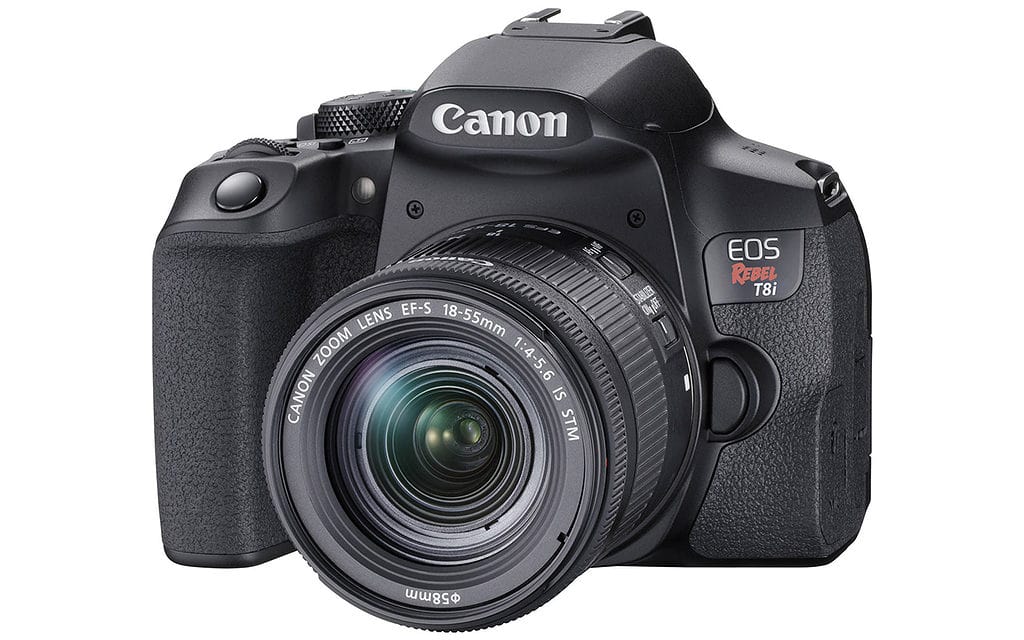
While a full-frame camera like the Canon EOS 90D offers enthusiast-level features like climate and more function keys and dials at a more affordable price than that, a more entry-level prototype like the Canon EOS Rebel T8i is even more cost-effective and have a lot to offer to beginning and intermediate photographers.
It lacks more flashy features, such as a top display or climate, and physical controls. However, you receive an APS-C sensor with the ability to capture images of a high caliber and access to the identical lenses, with a wide selection of reasonably priced EF and EF-S lenses with which you can improve to as your abilities advance.
3. Canon EOS Rebel T7 / EOS 2000D Camera
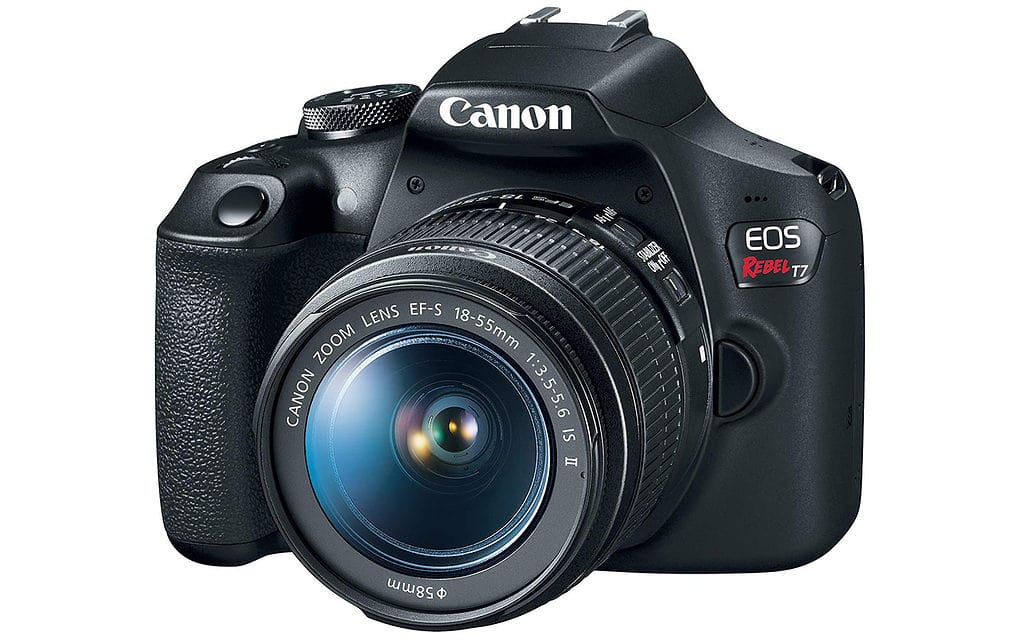
One of the most affordable options you can get brand-new is the Canon EOS Rebel T7 / EOS 2000D. You don’t get anything fancy, like weather proofing or even a tilting screen, at this price point, and the build quality feels lower and more plasticky than on more expensive versions.
However, a high-resolution APS-C sensor with respectable image quality lies beneath that understated façade. This model’s dynamic range and noise management aren’t as good as those of the Canon EOS Rebel SL3 or Canon EOS Rebel T8i because it’s an older, less expensive model. You can always change your lens later on for better results, but it’s still quite decent for the price.
4. EOS 1500D 24.1 MP Canon Digital SLR
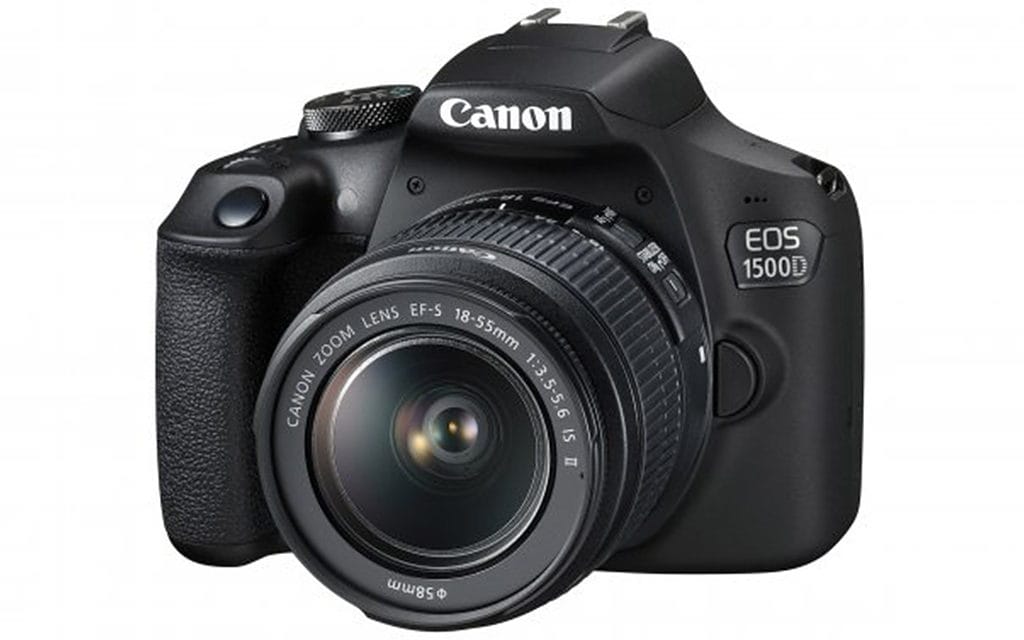
A lighter, slightly more mature model is the way to go if you’re purchasing your first DSLR camera on a low budget. That’s where Canon’s entry-level EOS Rebel T7 (also referred to as the 2000D outside the US) comes in; its specs won’t blow anybody away, but we found it straightforward to use, it gets the fundamentals right, and because it’s a few years old, it offers amazing value.
To be sure, there are a few give-and-takes involved. Burst photography is limited to a slow 3fps, and the antiquated autofocus system offers nine points. Live View focusing is slow; if you need a touchscreen, you should search elsewhere. And, as you’d anticipate, the plasticky shell doesn’t feel luxurious.
But there are excellent suggestions for beginners, too. The battery life is satisfactory, and the control scheme impressed us. You may also capture video, albeit the resolution is capped at 1080p. Importantly, the 24.1MP sensor delivers sharp, detailed photos with a respectable dynamic range and low noise levels in our tests.
5. Canon EOS 90D
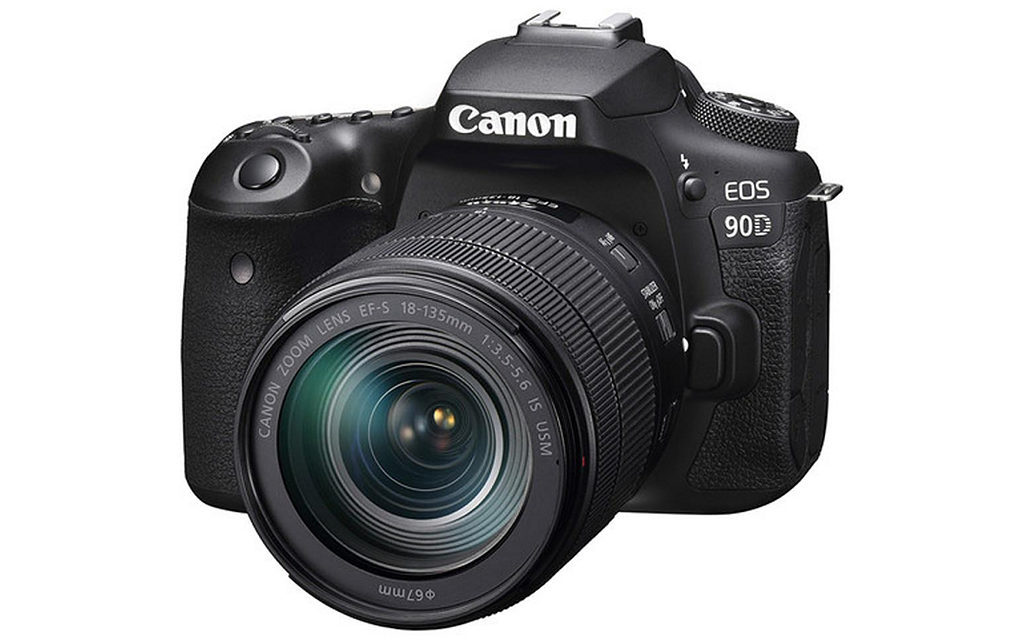
Compared to earlier EOS DSLRs, the EOS 90D is a major improvement. It has a 32.5-megapixel APS-C sensor, the highest resolution of any camera in its class. It makes it ideal for both close-up work and expansive prints. Uncropped 4K video recording, a redesigned processing engine, and faster burst shooting are just a few improvements over the 80D’s predecessor. The dust and water resistance are nice extras, and the 1350-shot battery life is much greater than that of the typical mirrorless camera.
6. DSLR Camera Nikon D780

Similar to the first Nikon Z6, the D780 combines the advantages of both a comprehensive DSLR and a mirrorless camera. Even though it’s still pricey, the D780 is currently our top recommendation for anyone interested in combining the advantages of mirrorless technology and DSLRs. It arrived in 2020.
The D780 improves upon the D750 in several ways, including sharing the same 273-point on-chip process focus mechanism as the Z6 (see no.8). However, if you prefer shooting with an optical viewfinder, it also comes with a battery life of 2,260 shots.
Based on our tests, we can confidently say that the camera’s image quality is up there with the best, and cutting-edge features like Face and Eye identification elevate its 4K video capabilities to new heights. It’s one of the greatest full-frame all-rounders on the market, but it’s still costly for a relatively new DSLR.
7. Nikon D5600

If you are looking for a cutting-edge, entry-level DSLR camera that fits your need as a beginner or intermediate snapper, this is one of the all-rounder picks. Nikon has designed this most recent D5600 range of DSRL cameras for those who prefer additional features and more creative control.
Offering APS-C CMOS as a sensor, this camera comes with a superb 24.2 MP high resolution and a decent, fast, and accurate 39-point AF system. Complimented with a 5fps maximum continuous shooting speed, or up to 820-shot battery life, the combo will produce such reliably detailed images. Not to mention the fantastic 1080p for video capture.
This camera also features an articulating 3.2-inch vari-angle touchscreen and the so-called SnapBridge technology by Nikon. The technology allows you to transfer your images automatically and directly from your camera to your other smart devices.
Regardless of its age, this camera has a polished handling with a comfortable grip – a polycarbonate shell that fits well in your hand.
8. Mark II Canon EOS 6D
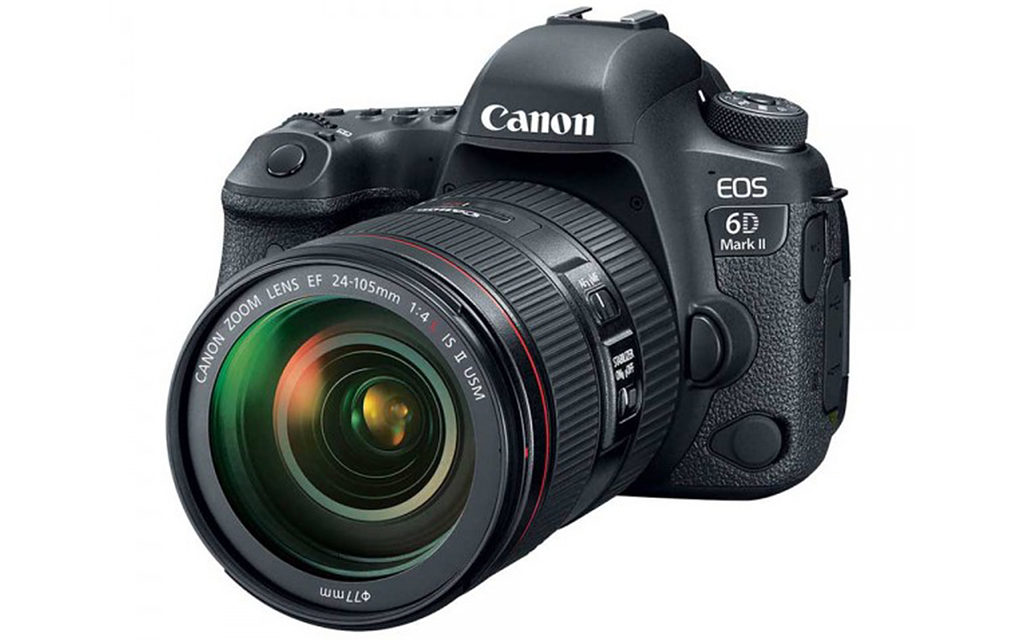
The EOS 6D Mark II is a full-frame DSLR, but it is surprisingly easy to operate for a beginner. However, the 26-megapixel sensor it houses and the reliable Dual Pixel CMOS AF technology it employs in live view mode more than makeup for the camera’s plasticky feel.
With 45 available AF points and 6.5 fps of continuous shooting, you can take excellent pictures of almost anything, including animals. Our testing revealed that it isn’t quite up to capturing fast-paced action images at the racetrack, but it excels at just about everything else.
Those without a joystick can use the touchscreen at the back to tap the screen to focus and shoot. Despite this, the 6D Mark II is popular among amateur photographers due to its dependability and high-quality output.
9. EOS-1D X Mark III from Canon

Canon, a normally conservative business, has unveiled the EOS-1D X Mark III, a camera packed with cutting-edge technology such as deep learning AF, an optical Smart Controller, compatibility for HEIF and HDR PQ, CFexpress, 12-bit internal 4K RAW, head tracking, and much more. Canon’s hybrid body incorporates the best features of DSLRs and mirrorless cameras, allowing it to adapt to any shooting environment.
It’s a hybrid system that can adapt to the needs of different professions and shooting situations, providing the speed of an optical DSLR and the enhanced precision of a mirrorless camera. It was also a watershed moment for Canon’s videography capabilities, enabling the company to produce uncropped 4K video.
10. Nikon D3500

Even though it was released in 2018, the Nikon D3500 remains a top choice for amateur photographers. We think it’s great for beginners and among the top Nikon cameras. The camera’s LCD screen doubles as a lesson, and the included ‘Guide’ shooting mode makes it easy to learn how to use the device.
The D3500’s 18-55mm kit lens is also decent, but its 24-megapixel sensor allows for far sharper photos. A beginner would like the camera’s simplicity, low price, compact size, and lightweight despite its limitations, such as a fixed rear screen and a maximum resolution of Full HD rather than 4K. It lacks some of the capabilities of a mirrorless camera, but it’s hard to beat for the price, and all the bells and whistles might be overwhelming if you’re starting out.
What to Look for When Purchasing Your First DSLR Camera
1. Image Quality
Photographers prioritize image quality, making it one of the most subjective requirements for a new camera. Multiple elements, such as the camera’s optics, lens quality, and sensor size, contribute to the final image.
2. Live View
While Live View LCDs have their uses, they also cause design and performance issues. Most notably, when using Live View, the autofocus will again be delayed, reducing the benefits of SLRs’ faster shutter speeds over those of compacts. Ensure the LCD can be swiveled so you can view it whether the camera is high in the air or low to the ground if you absolutely must have one.
3. Optical Stabilizer
Photographing in low light or with a telephoto lens can be challenging without the aid of a tripod. Almost every digital single-lens reflex camera has a stabilizing system. However, there is a catch: Canon and Nikon include stabilizers in their lenses, whereas Sony, Pentax, and Olympus include stabilization in their camera bodies.
The distinction is significant since IS/VR lenses (significantly more expensive than “regular” lenses) are required for Canon and Nikon cameras. However, the stabilization feature can be used on other brands’ cameras with any lens. The stabilization effect is roughly the same (3-4 stops) between the two approaches. The advantage of stabilized lenses is that you can see the stabilized image inside the optical viewfinder, while the advantage of stabilized bodies is that you can use any lens to achieve the same result.
4. Video Setting
Some modern DSLRs have a video mode, usually in HD, which is another capability borrowed from tiny cameras. Making movies with a DSLR has its ups and downs. It has the potential to achieve a gorgeous, film-like image, but its autofocus and exposure controls are so basic that it’s only practical in static, low-movement settings.
Although most DSLRs share a core set of capabilities—such as the option to shoot in manual mode—some manufacturers and models have taken automation a step further, while others have not. The ISO range, number of autofocus points, and pixel density usable by a given camera will vary (in megapixels).
5. Price
For the sake of this post, we will be focusing on beginner-level options. Therefore, the price will be an issue. The more money you have, the more advanced a system you can afford. However, it is important to remember that variations between cameras can sometimes boil down to feature sets, with image quality keeping relatively constant, particularly with entry-level models.
Keep in mind that the quality of the lens you intend to use with the camera is far more important.
Although the design of an entry-level camera may not be your top priority when making a purchase, selecting a device with a reliable build is still crucial. Some inexpensive cameras are made entirely of plastic, whereas the housing of more costly cameras may be made of metal or other waterproof material.
Even at the prices we’re talking about, it’s smart to learn as much as you can about the camera’s build quality before making a purchase.
Are there any extra charges that come with buying a DSLR camera?
1. Data Storage Card, or SD Card
Even if your camera doesn’t have one, you presumably already have at least one. It’s also a good idea to make copies of your data in case you ever left the SD card in the card reader at home by accident.
2. Battery
In other instances, you may find that your photography session has lasted longer than the battery or that you have forgotten both the battery and the SD card at home. Having a complete backup would address both of these issues.
3. Tripod
You won’t be able to keep the camera as steady as you would with a dedicated camera holder. Sticks for taking selfies just won’t cut it.
4. Flash
Pop-up flashes are included on most entry-level DSLRs, but their presence is largely symbolic. You must buy a full-size flash for your camera if you want professional-quality photographs.
The answer is at hand. About as much as you need to know to go out and get a professional-grade DSLR camera. While this is a significant financial commitment for some, we hope the following advice will help you make the most financially sound choice possible.
It is a comprehensive guide to purchasing your first DSLR camera and includes some of the best DSLR cameras in 2025. Whether you’re just dipping your toes into the world of photography or looking for a new camera to be bought into your collections, consider these factors before you go out and buy a camera.






